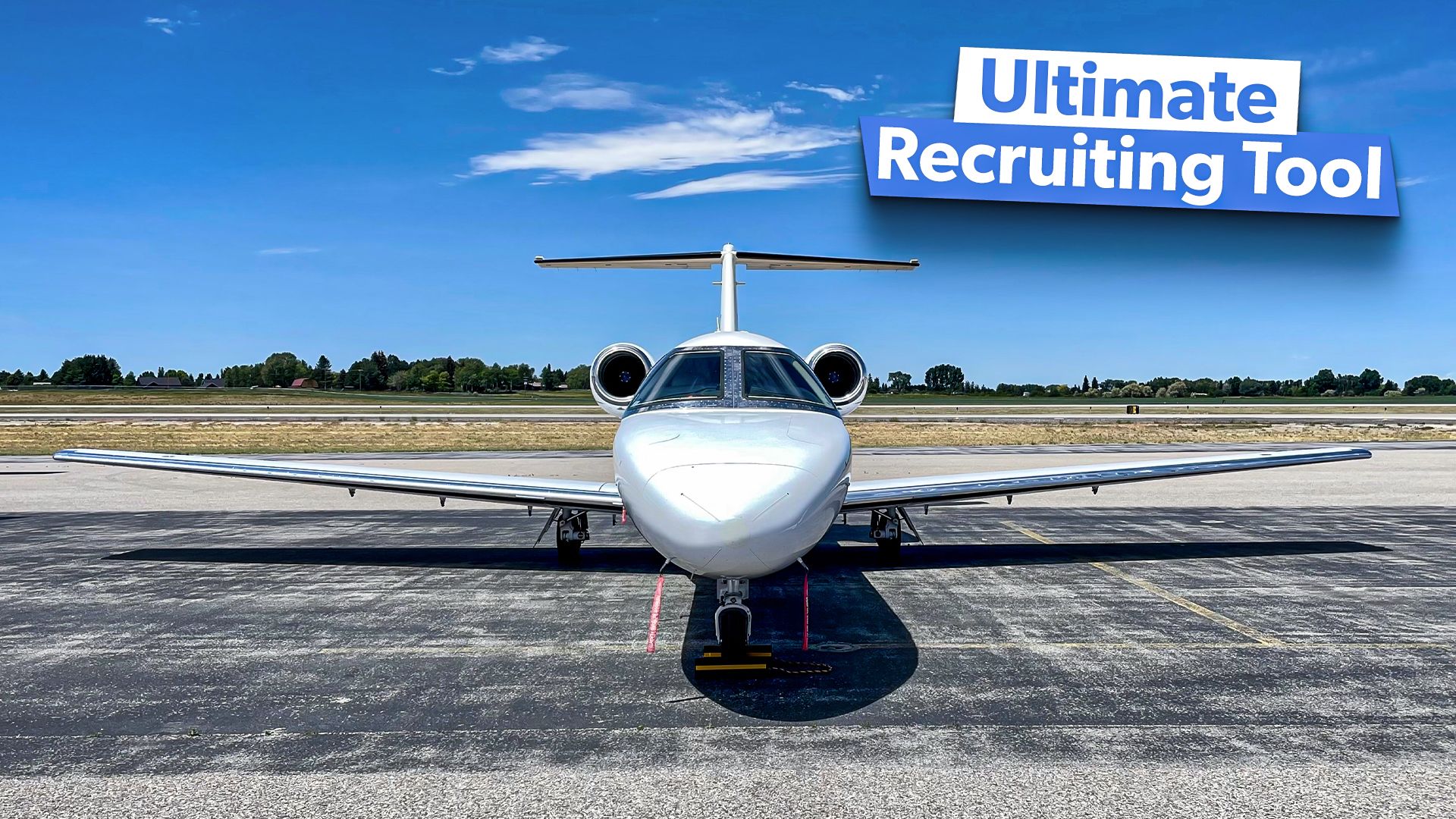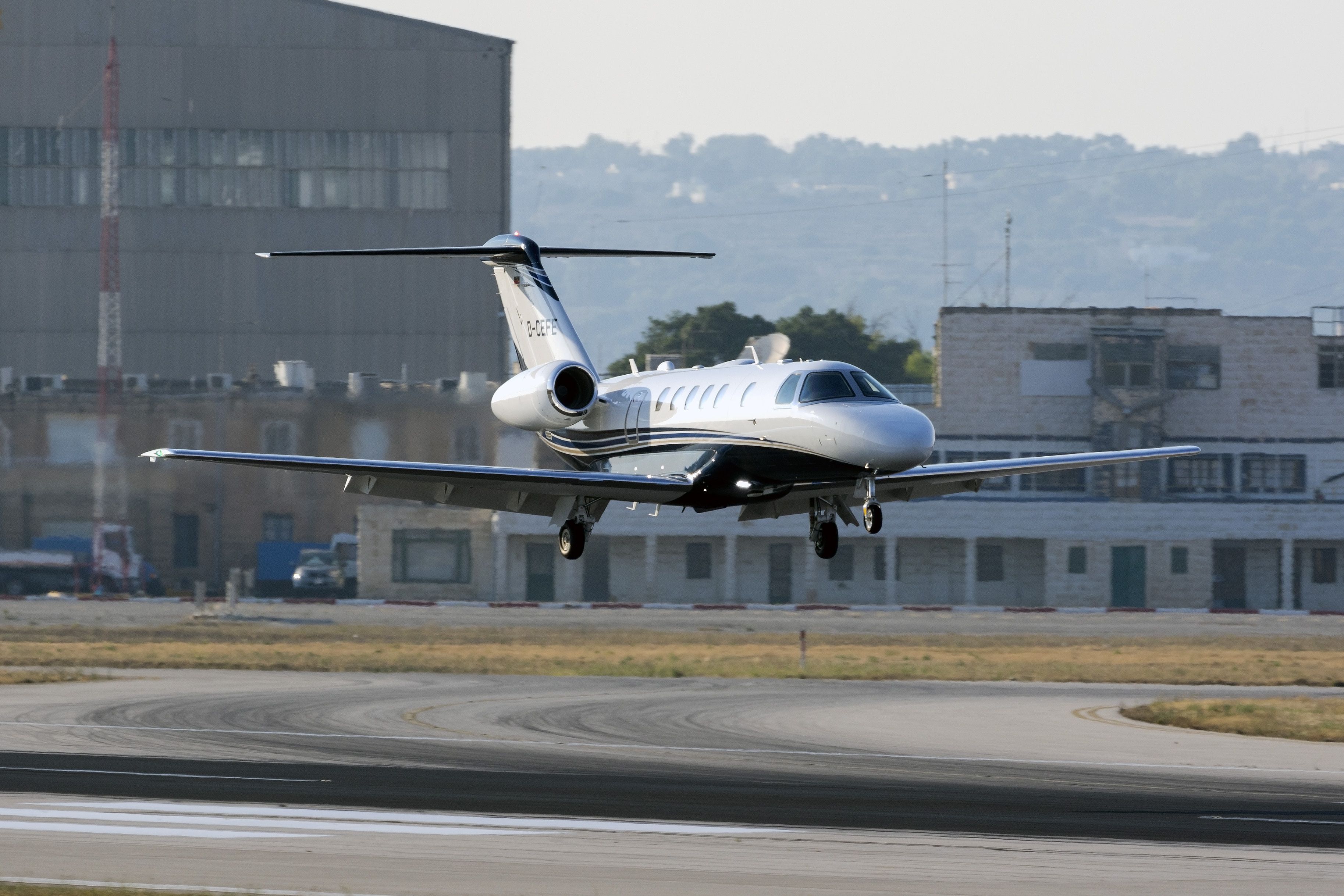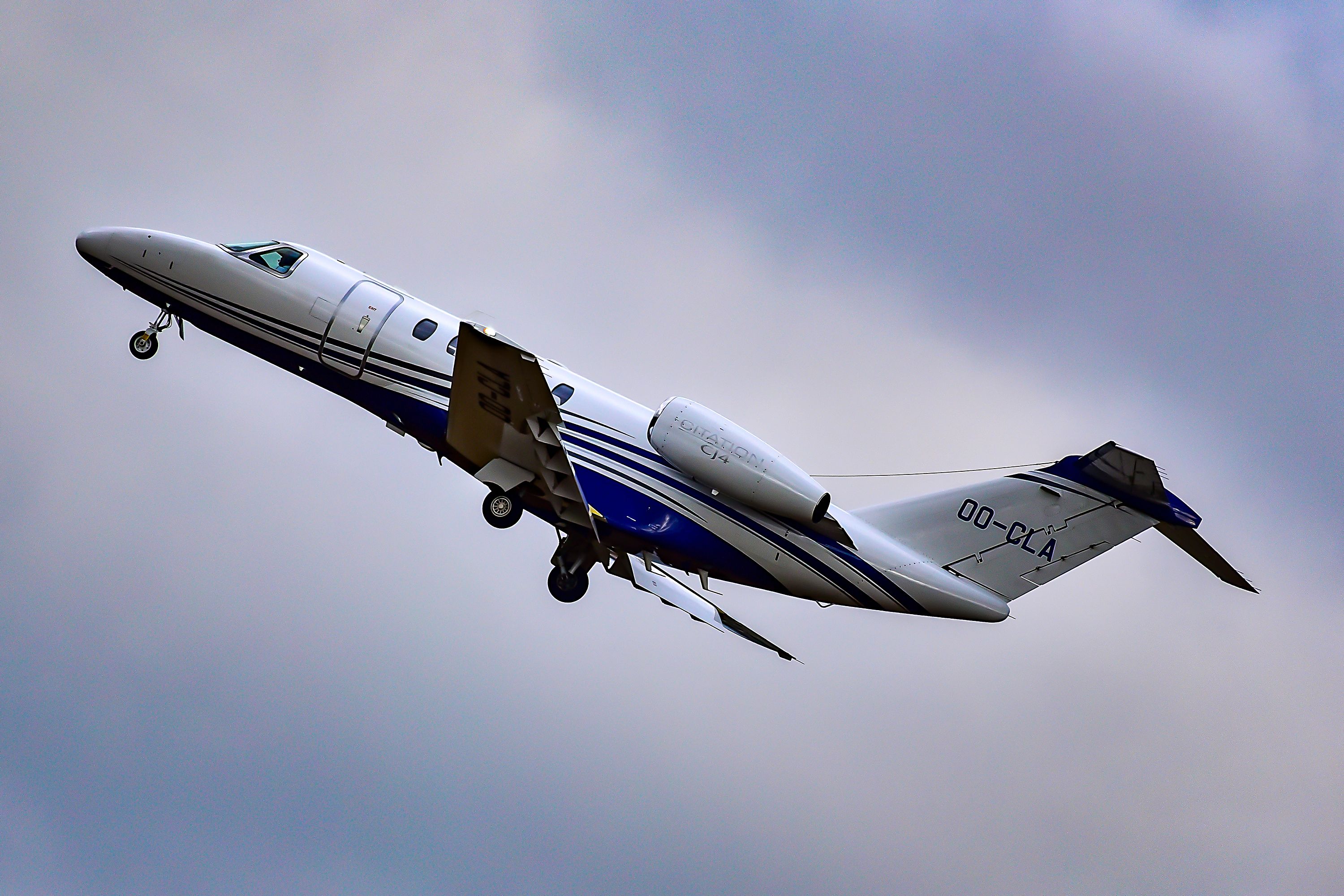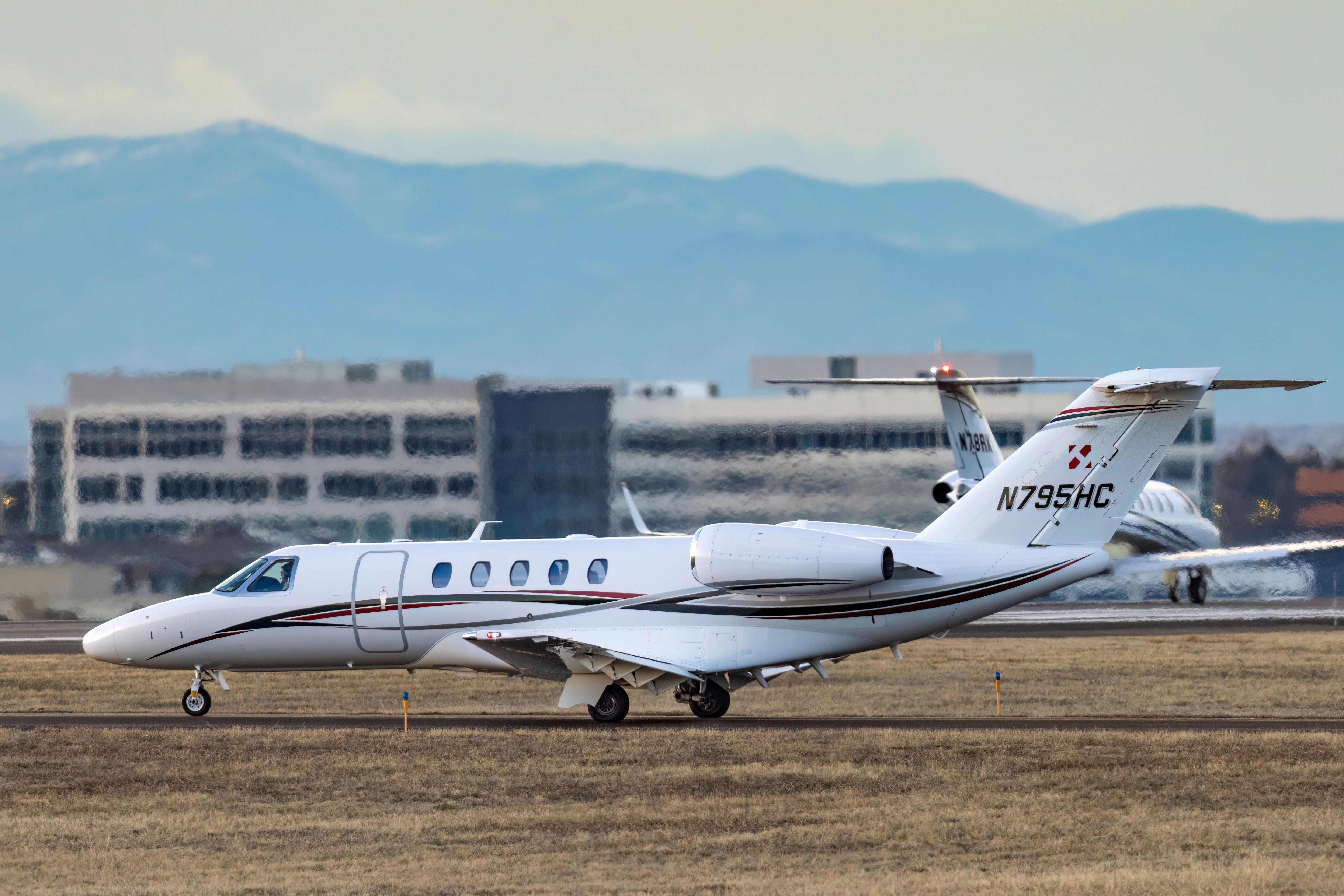Summary
- The University of Kansas owns a business jet for flexible travel, used for recruiting.
- The Cessna Citation CJ4 is the university’s current aircraft, registered as N414KU.
- The CJ4 features upgraded engines and impressive performance specs for long-range travel.
The University of Kansas is one of the most popular colleges in the United States. The college is located in Lawrence, Kansas, and was founded in 1865. Since then, it has become one of the most well-known universities in the Midwestern United States.
The school has become notable for its impressive Medical Center that is located in Kansas City, as well as its popular schools of engineering, architecture, business, law, and journalism.
In popular culture, the school has a reputation for fielding a dominant basketball team. In athletics, the University of Kansas Jayhawks compete in NCAA Division I sports within the Big 12 Conference. Overall, the university competes in a wide range of athletics, including baseball, football, cross-country, track & field, women’s rowing, golf, softball, women’s tennis, and swimming & diving.

Related
Private Jets For College Athletes: A Guide To Private Jets Offered As NIL Deals
Several collegiate athletes have recently inked NIL deals with private aviation companies.
However, the university is most known for its impressive men’s basketball team, which has won four NCAA National Championships, with its most recent championship occurring in 2022.
To assist with recruiting some of the top talent in the United States, the University of Kansas owns and operates a business jet. This private jet provides the executives of the university with the ultimate traveling flexibility.
Photo: InsectWorld | Shutterstock
Private jet users can depart from their destination whenever they want. This means they are not restricted to scheduled commercial flights. Additionally, private jet operators can fly whatever route they prefer instead of being restricted to scheduled commercial routes that may force passengers to connect through larger cities.
Business jets are also much smaller than commercial airliners. This means that the smaller jets can land on shorter runways at smaller airports. This allows private jet operators to land at smaller airports that may be closer to their intended destination.
Many of these airports are located in smaller towns or even other universities, which makes sense for a team of university executives to utilize. Let’s take a closer look at the aircraft that the University of Kansas operates.
About the Jayhawks’ plane
Currently, per JetSpy, the University of Kansas operates a Cessna Citation CJ4. This aircraft, which is registered as N414KU, was first manufactured in 2014. The Federal Aviation Administration (FAA) officially lists the owner of the aircraft as Crimson & Blue Skies LLC, which is registered in Lawrence, Kansas, where the head campus of the University of Kansas is located.
According to JetSpy, N414KU has flown a total of 87 flights in 2024 so far. This has amounted to a total of 113 flight hours. These flights used approximately 15,000 gallons of fuel, which amounts to 144 metric tons of carbon emissions. The airports that N414KU has visited the most in 2024 are:
- Lawrence Regional Airport (LWC)
- Wichita Dwight D. Eisenhower National Airport (ICT)
- Dallas Love Field (DAL)
The history of the Cessna Citation CJ4
Cessna first developed the Citation CJ4 as part of the CitationJet series. The CitationJet family of aircraft began with the creation of the CitationJet beginning in 1985. Cessna discontinued the Citation I, another light aircraft, and wanted to find a replacement for the niche market.
Therefore, the CitationJet was introduced in October 1989 at the National Business Aviation Administration (NBAA) annual convention. It flew for the first time in April 1991, and it was later certified by the FAA in October 1992.
The aircraft saw immediate success with the original CitationJet, as it surpassed the Citation I in almost every aspect, signaling a large improvement in the light jet industry.
Photo: Vytautas Kielaitis | Shutterstock
Since then, Cessna has released several other light business jets that fall into the CitationJet (CJ) family. This includes the CJ1, the CJ2, the CJ3, the M2, and, of course, the CJ4.
Cessna announced the CJ4, a stretched variant of the CJ series, at the annual NBAA conference in October 2006. This aircraft was set to be the largest in the family.
The first CJ4 prototype conducted its maiden flight in May 2008, and eventually, it received its type certificate in 2010. The aircraft is still in production, with several upgraded variants released since then, and a total of nearly 500 CJ4s have been built.
Notable design features of the Cessna Citation CJ4
Overall, the CJ series is designed as light jets with competitive speeds and ranges. As previously mentioned, the CJ4 is the longest in the family. The CJ4 has the following performance specifications:
|
Length |
53 feet four inches |
|---|---|
|
Height |
15 feet five inches |
|
Wingspan |
50 feet ten inches |
|
Maximum takeoff weight (MTOW) |
17,110 pounds |
|
Maximum cruise speed |
451 knots (519 miles per hour) |
|
Range |
2,165 nautical miles (2,491 miles) |
|
Service ceiling |
45,000 feet |
The aircraft features a cabin that is longer than the smaller CJ3 by just under two feet. This means the interior cabin reaches just over 17 feet, and the cabin can seat a maximum of ten passengers, depending on the configuration.
Photo: BlueBarronPhoto | Shutterstock
Cessna also installed a highly upgraded wing on the CJ4. This wing is moderately swept, similar to the larger Citation XLS, and has a wing sweep of 12.5 degrees. The CJ4 also utilizes upgraded engines, such as the Williams FJ44-4A turbofan engines.
These each provide over 3,600 pounds of thrust. These upgrades help the aircraft reach a high cruise speed, the fastest in the CJ series. It also has impressive takeoff and landing requirements, as it can take off on runways that are just 3,400 feet long and land on runways that are under 3,000 feet long.




